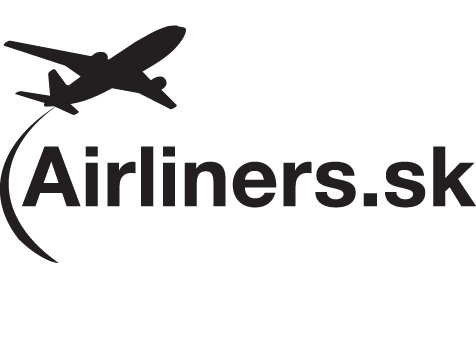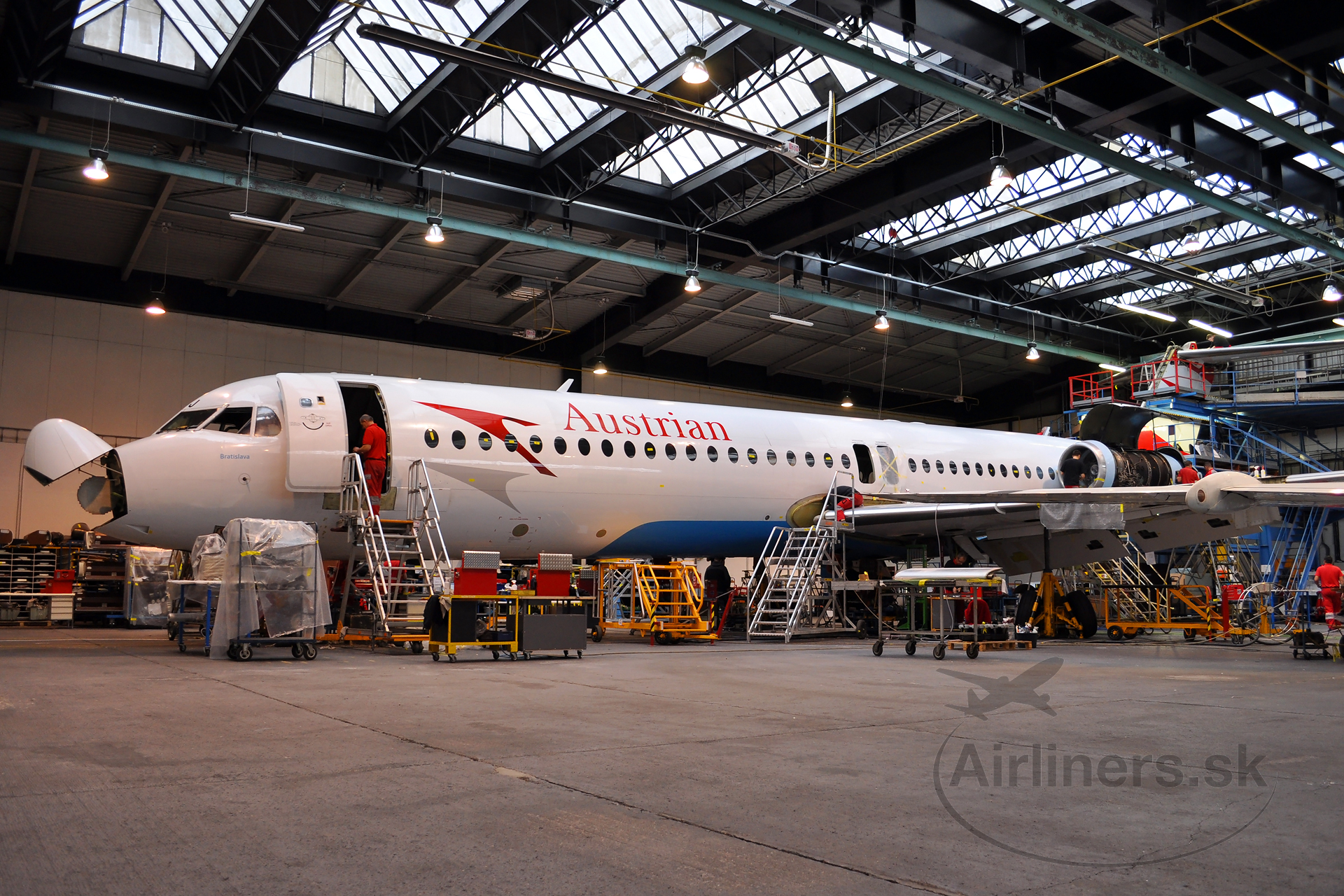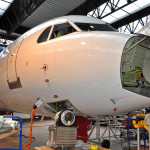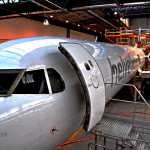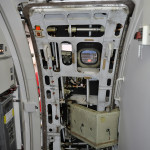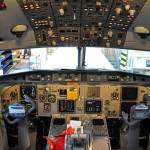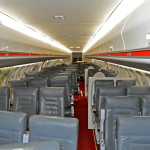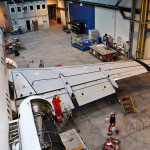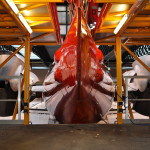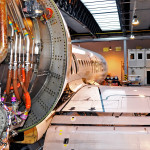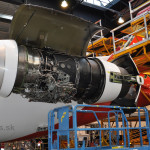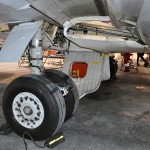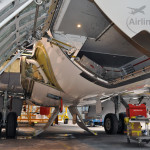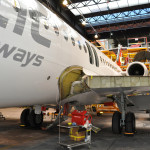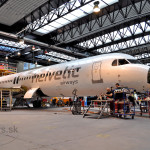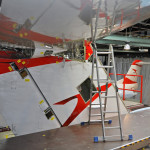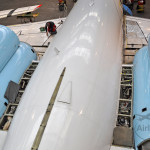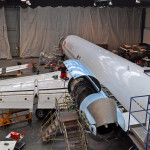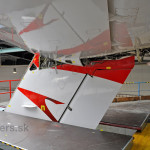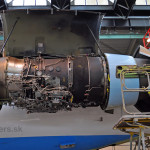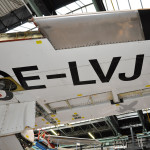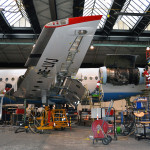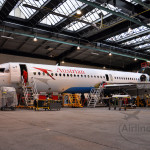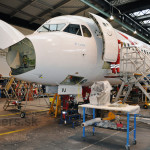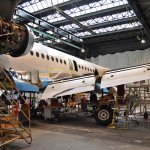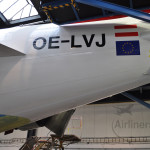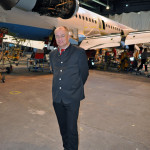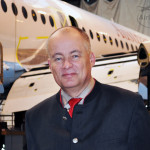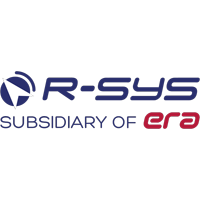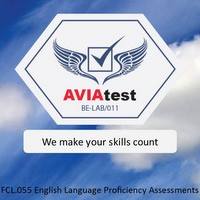People are travelling by plane for business or leisure reasons. Air carriers are competing with offers and it is becoming harder to choose, which type of plane he would like to fly with.
All planes from all carriers have something in common. They are machines and needs to be checked on regular basis.
Austrian Technik Bratislava (www.atb.sk) based in Bratislava is the company oriented on aircrat maintenance. Airliners.sk, civil association, has the privilege to visit Austrian Technic Bratislava, make pictures of aircraft maintennce and to do a short interview with Mr. Wolfgang Henle, ATB CEO.
Interview:
Good morning. We would like to express thank you for possibility to make this interview.
Airliners.sk: We already know that ATB is here from 2007. But the question from many people is: why Bratislava and not Vienna?
W. Henle.: The answer is very simple. In times like this it is the cost of the production.
Airliners.sk: You started with planes like a Fokker 70 and Fokker 100, now you are certified also for Embraer 170/190/195 and Airbus 319/320/321. Do you have any future plans to expand your maintenance portfolio to other aircraft, for example Boeing?
W. Henle: No. We are very committed to the Embraer, because Austrian Airlines is changing from Fokker to Embraer. Also a lot of our customers are changing to Embraer. So we concentrate on Embraer plus the Fokker. The Fokker will stay important because our Australian friend are flying the Fokker and they plan to fly the Fokker for a quite long time. So more or less in a simplified picture in the long run we will go for Embraer in the winter time and the Fokker in summer time.
Airliners.sk: And what about planes like Bombardier or Mitsubishi?
W. Henle.: No, we are not really looking into that because the planes when they get delivered first three years they do not need nearly no heavy maintenance.. many maintenance organizations are not really interested in new planes. Repair and maintenance shops are interested in old plane which need lots of maintenance.
Airliners.sk: How is the maintenance managed? What is the first step and how long does it take?
W. Henle.: The first step for the maintenance is the work package from the customer. We have to know what to do on his plane. The CAMO (Continuing Airworthy Maintenance Organization) organization of the customer has the maintenance plan and they send us the bundle of tasks and jobs and orders. In the common speech it is called a „C“ check of this bundle of things but there is no common „C“ check, it is a package. We evaluate this work package and then you send the price offer. If the customer agreed, you have a price offer for that work package and the time how long is the plane on the ground here in the premises. The work package does not include possible repairs but only the checks –If a check finds a problem like corrosion we have to make a repair. Each repair is signed off by the customer representative and our project leaders. In average we need the same amount of work hours for checks as for repairs found in these checks.All material that is needed is pre-ordered so we do not lose time. Time is the most important thing for the customer –As long as his is the aircraft on the ground he does not earn money.
Airliners.sk: Do you provide „C“ and „D“ checks?
W. Henle.: The name „C“ and „D“ checks are not really used in the industry The checks are always a bundle of specific tasks. That is why „C“ check can take 1500 hours or 8000 hours. It depends on the maintenance program. Some things needs to be checked every 5000 hours, some every 100 hours. A bundle of tasks – done in one groundtime is called a Check.
Airliners.sk: How long is the plane on the ground?
W. Henle.: It depends on the amount of tasks which form the check. For very heavy checks (8000 hours) the aircraft may stay six weeks on the ground. Smaller checks take two weeks.
Airliners.sk: Do you provide interior changes, modifications for the customers?
W. Henle.: Yes. If it is order by the customer, we do that too.
Airliners.sk: Also VIP modifications?
W. Henle.: Whatever the customer orders. We have also VIP planes here, VIP Fokkers. It always depends on the customer. They sometimes order changes in the interior, they can order painting or changes on the plane.
Airliners.sk: Where are most of your contractors from?
W. Henle.: Mostly from Slovakia or Hungary. Sometimes we also ask people from Netherlands.
Airliners.sk: Are the spare parts for Fokker still being manufactured?
W. Henle.: Still in production. Approximately 15O Fokkers are still flying around the world so the industry is still making the spare parts.
Airliners.sk: Do you cooperate with Air Livery?
W. Henle.: Yes. We have close cooperation with Air Livery. We subcontract the Air Livery to do the painting on our customer aircraft. Rom the law side we are responsible that everything is done correctly. You have to calculate weight and balance, balance the rudders and lot of other things. In the end we sign that the painting was done correctly.
Airliners.sk: As we know you have the contract with Alliance Airlines from Australia. But people wonder why do they fly their planes to ATB for maintenance?
W. Henle.: Simple answer – costs. It is still valuable for them to fly the plane here for the maintenance.
Airliners.sk: What about your capacity? How many aircraft are you able to maintain at the same time?
W. Henle.: We got 5 lines, we can have 5 aircrafts in the hangars but we do not have the men power to do mintencane on 5 planes in parallel In peak times we can do 3 lines in parallel…
Airliners.sk: What kind of professions, people do you need here to be able to make a maintenance?
W. Henle.: That is the very good factor about Slovakia. People have very good education in the technological sector., There are schools in Trenčín, Žilina, Košice. Most of our people are coming from there. But of course they still need a lot of training here in addition to the university education until they qualified aicraft engineers.
Airliners.sk: Now little bit from Austrian Airlines. How do you perceive the change from Fokker to Embraer?
W. Henle.: It is a big challenge for us to change to different fleet, to get all people trained and get the new tools, but we have to be flexible.
Airliners.sk: How many Fokkers do the Austrian Airlines have, and what is their fate?
W. Henle.: 21 Fokkers and they all go to Alliance Airlines in Australia.
Airliners.sk: Once again thank you very much for the opportunity to talk to you.
